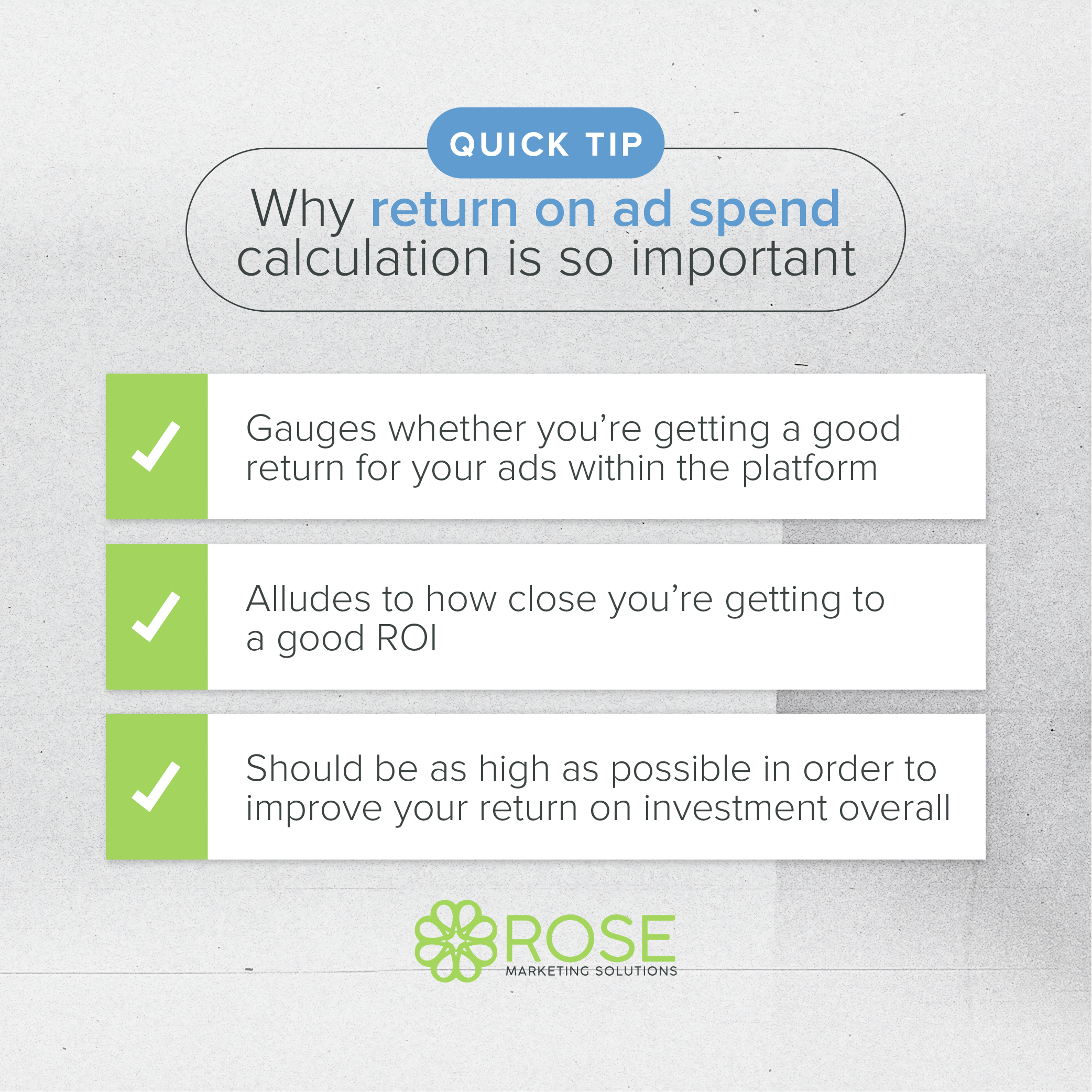Let’s be clear: You shouldn’t spend money on ads if you’re not going to measure the return. Period.
That isn’t the most popular statement, since measuring ad spend isn’t always straightforward. Maybe you don’t know how to set up measurement properly, or you can’t figure out how to track it. Regardless, it just doesn’t make sense to throw money at paid ads if you don’t know what you’re getting back.
It’s crucial to pay attention to your return on ad spend, or ROAS for short.
Today, we’ll go over exactly what ROAS is, why it matters so much, what formula to use in a ROAS calculation, and what a “good” ROAS looks like.
Let’s dive in!
ROAS Calculation vs. ROI Calculation
Return on investment (ROI) takes into account the total cost of doing business versus the cost of doing ads. It’s a calculation of net profit divided by net spend over a certain period multiplied by 100 to convert it to a percentage.
Meanwhile, return on ad spend (ROAS) only considers the cost of an ad campaign versus the value you get in return. A ROAS calculation is the total campaign revenue divided by the total campaign cost.
You’ll use the ROAS calculation within the platform where you run ads, while the ROI calculation is used by your accounting department.
Why ROAS Calculation Is Important
It’s crucial to track your return on ad spend to gauge whether you’re getting a good return for your ads within the platform. ROAS also alludes to how close you’re getting to a good ROI, and needs to be as high as possible in order to improve your return on investment overall.
Most service businesses whose primary goal is lead generation focus on Google Ads and Facebook. However, our ad strategies apply to all digital platforms where you can pay for ads (per click or lead) and track conversions — Instagram, Waze, TikTok, Twitter, etc.

Example Calculation: Child Care Company
How do you calculate your return on ad spend? Let’s use a child care company as an example.
The first piece of information we need is the average lifetime value of an enrollment. This can be a tricky number to calculate — some parents enroll their children for only a few months, while others enroll for several years. Find the average first.
At Rose Marketing Solutions, we assign a dollar value to an enrollment based on an estimated lifetime value. We then divide by the dollar amount we spent to get that lead. Essentially, it’s the number of conversions multiplied by the average lifetime value (which is the total ad conversion value), divided by ad spend.
For example, let’s say 10 people complete forms via the ad channel and six of these people enroll. Let’s assign a lead value of $500/month (based on expected/average lifetime value) to each of these enrollees. This results in a total ad conversion value of $3,000, divided by the ad spend of $1,500, which gives us a 200% ROAS.
Example Calculation: Ecommerce
Return on ad spend looks slightly different in the ecommerce world. This ROAS calculation is more simple because there are concrete values associated with products and no estimation necessary.
Let’s look at a pet supply company that sells dog collars for $15 each and spends $50 on ads per month. In one month, they sell 20 collars, totaling $300. Therefore, the total ad conversion value is $300.
Because the ad spend is $50, this gives us a return on ad spend of 600%.
What Is a “Good” ROAS?
These two examples bring up a question we hear often: “What is a good ROAS?” It’s understandable that business owners want to know what to expect and want a good return on their spending. However, this question doesn’t have a simple answer, since every business is different. A number that’s “good” for one business isn’t necessarily “good” for another.
That said, we do have minimums we aim for in certain categories of business. In lead generation, we look for a minimum of a 500% return on ad spend. In ecommerce, we look for a minimum of a 300% return.
Based on actual numbers, Rose Marketing Solutions typically sees a 1,200% return in lead generation, which is very healthy. Some of our clients are even seeing a ROAS of over 2,000%.
Maximize Your Return
Not only is it possible to attain and maintain excellent ROAS, it should be an essential part of your marketing strategy. The only way to achieve that is by tracking and measuring your ROAS. If you’re not doing that, running paid ads just doesn’t make sense.
ROAS is more than a feel-good metric. It shapes the way you run ads and can influence the success of your business overall.
Keep in mind that improving your ROAS is always possible. By looking at your campaign, assessing, and adjusting, you can teach the algorithm what you’re after. Once you do that, the platform’s algorithm will become your ally and go after your goals for you.
If you’re running ads, we’d love to take a look at your campaigns and perform a ROAS calculation to maximize your return. Give us a call or send us a message. We’re happy to help!
Subscribe
Sign up with your email address to receive news and updates.

